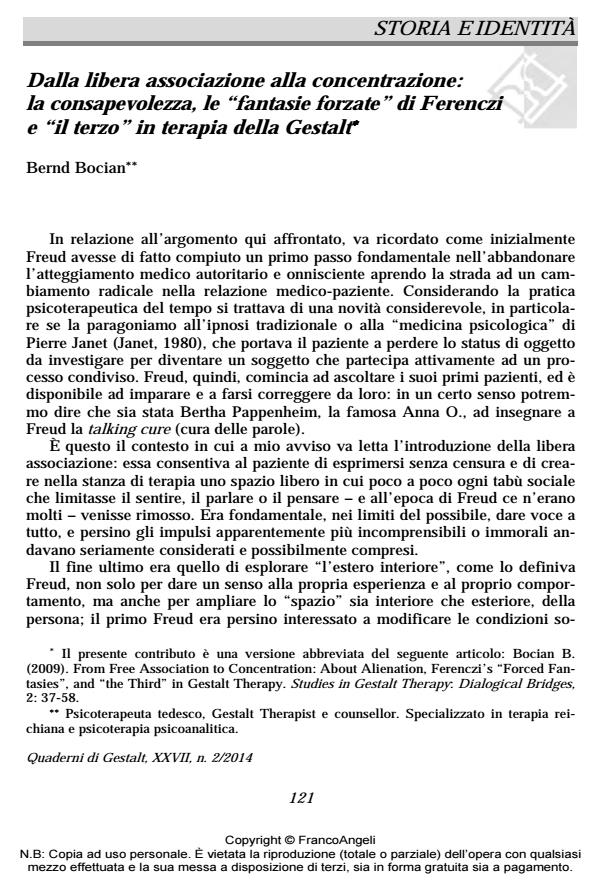From free association to concentration: awareness, Ferenczi’s "forced fantasies" and "the third" in Gestalt therapy
Journal title QUADERNI DI GESTALT
Author/s Bernd Bocian
Publishing Year 2015 Issue 2014/2
Language Italian Pages 15 P. 121-135 File size 245 KB
DOI 10.3280/GEST2014-002008
DOI is like a bar code for intellectual property: to have more infomation
click here
Below, you can see the article first page
If you want to buy this article in PDF format, you can do it, following the instructions to buy download credits

FrancoAngeli is member of Publishers International Linking Association, Inc (PILA), a not-for-profit association which run the CrossRef service enabling links to and from online scholarly content.
This paper describes Perls’s revision of Freud’s technique of free association as part of a tradition that started with Breuer and Freud, continued with Ferenczi and the Berlin character analysts, and then led to their student Fritz Perls. In this context, Perls’s "dramatizing techniques" that the authors calls "the third" in Gestalt therapy, are seen as further developments of Ferenczi’s work with "forced fantasies".
Keywords: Concentration, free association, gestalt therapy, character analysis, Ferenczi, history of psychotherapy.
Bernd Bocian, Dalla libera associazione alla concentrazione: la consapevolezza, le "fantasie forzate" di Ferenczi e "il terzo" in terapia della Gestalt in "QUADERNI DI GESTALT" 2/2014, pp 121-135, DOI: 10.3280/GEST2014-002008